Messen Sie die Luftverschmutzung mit
Intelligente Luftqualitätsmonitore von Prana Air
Überwachen, analysieren und steuern Sie Ihre Luftqualität mit Präzisionstechnologie.
Zwischensumme: 0.00$
Messen Sie die Luftverschmutzung mit
Überwachen, analysieren und steuern Sie Ihre Luftqualität mit Präzisionstechnologie.
Explore
Für jeden Raum: Zuhause, Büro und industrielle Nutzung




































Einhaltung von
LEED, WELL, & ASHRAE
Standards

Kostengünstige Lösungen ohne Kompromisse bei der Genauigkeit durch den Einsatz von High-End-Sensoren zur Messung.

Überwachen Sie die Luftqualität jederzeit und überall über die mobile AQI-App, die TV-App oder das Web-Dashboard.
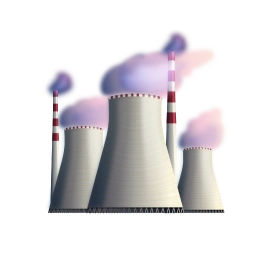
Maßgeschneiderte Lösungen für verschiedene Branchen mit klaren, detaillierten Datenansichten.

Präzise Schadstoffverfolgung in Echtzeit mit kompakten, benutzerfreundlichen Geräten.

Stellen Sie eine Verbindung über WLAN, GSM oder RS-485 her und integrieren Sie sie in das BMS für eine Echtzeitüberwachung rund um die Uhr.
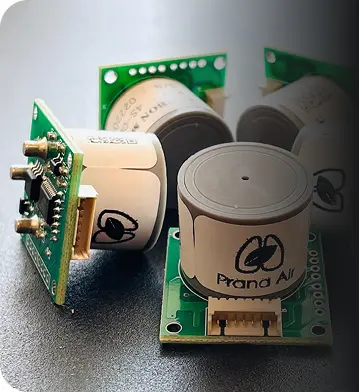
Die Leiterplatte verwaltet Strom, Verarbeitung und Kommunikation. Es wandelt analoge in digitale Ausgänge um, unterstützt BMS (Battery Management System) und ermöglicht Datenprotokollierung und Kommunikation über WLAN, Bluetooth oder LoRa.

Sensoren erkennen Schadstoffe und werden auf Genauigkeit kalibriert. Die Automatisierung hilft ihnen, sich an Faktoren wie Temperatur und Luftfeuchtigkeit anzupassen. Bisynking stellt sicher, dass mehrere Sensoren die Daten auf Zuverlässigkeit überprüfen.
Vom Sensor zu den Daten: So funktionieren Luftqualitätsmonitore
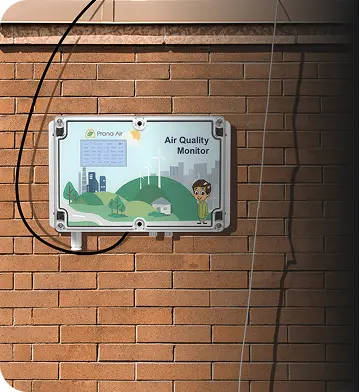
Das Gehäuse gewährleistet eine ordnungsgemäße Luftprobenahme für präzise Messwerte. Ein auf Perfektion ausgerichtetes Design reduziert Störungen. Die Wetterfestigkeit schützt vor Umwelteinflüssen, während eine robuste Struktur für Langlebigkeit sorgt.

Das Dashboard verarbeitet und zeigt Luftqualitätsdaten an. Das Backend (Server) übernimmt die Datenspeicherung und -verarbeitung, während das Frontend Grafiken, Warnungen und Erkenntnisse für eine einfache Überwachung präsentiert.

Die in die Luft freigesetzten Schadstoffe sind Luftschadstoffe, die sich negativ auf die Umwelt und die menschliche Gesundheit auswirken.
Nach Angaben der WHO, neun von zehn Menschen breathe poor air quality, with 99% of the global population exposed to levels exceeding recommended limits. Air pollution causes 8 Millionen Todesfälle pro Jahr – 3,8 Millionen in Innenräumen und 4,2 Millionen im Freien.
Der dramatische Bevölkerungsanstieg hat den Energieverbrauch und den Ressourcenverbrauch erhöht. Es führt zu höheren Schadstoffwerten und größeren Gesundheitsrisiken, insbesondere Atemwegserkrankungen. Daher ist die Überwachung der Luftqualität von entscheidender Bedeutung. Die Luftqualitätsmonitore von Prana Air helfen bei der Überprüfung der Schadstoffe in Ihrer Umgebung, um fundierte Entscheidungen für eine gesündere und sauberere Luft zu treffen.
Erfahren Sie mehr
Prana Air verwendet in jedem Gerät fortschrittliche Technologie zur Überwachung der Luftqualität. Diese Sensoren können problemlos verschiedene Schadstoffe sowohl im Innen- als auch im Außenbereich erkennen.
Luftsensor:
Funktionsprinzip:
Licht tritt durch die 90°-Öffnung des Spiegels ein und wird zum Sensor reflektiert. Die Fotodiode zeichnet einen Impuls auf, um ein elektrisches Signal für die Feinstaubkonzentration zu erzeugen.
Luftsensor:
Funktionsprinzip:
Gasmoleküle absorbieren Infrarotstrahlung (IR) einer bestimmten Wellenlänge und vibrieren. Sensoren messen die Abnahme des durchgelassenen IR-Lichts mit der Gaskonzentration.
Luftsensor:
Funktionsprinzip:
Diese amperometrischen Kraftstoffe verfügen über zwei Elektroden. Es oxidiert mit in der Luft befindlichen Wassermolekülen und der Gaschemikalie, wenn das Gas mit den Arbeitselektroden in Kontakt kommt.
Luftsensor:
Funktionsprinzip:
Halbleiterpartikel absorbieren Sauerstoff, indem sie bei hohen Temperaturen freie Elektronen einfangen. Die Verarmungsschicht bestimmt die Partikelgröße, die die gesamte Oberfläche jedes Partikels bedecken kann.
Luftsensor:
Funktionsprinzip:
Diese amperometrischen Brennstoffzellen verfügen über zwei Elektroden. Es reagiert mit Wassermolekülen in der Luft und oxidiert, wenn das giftige Gas und eine Arbeitselektrode in Kontakt kommen.
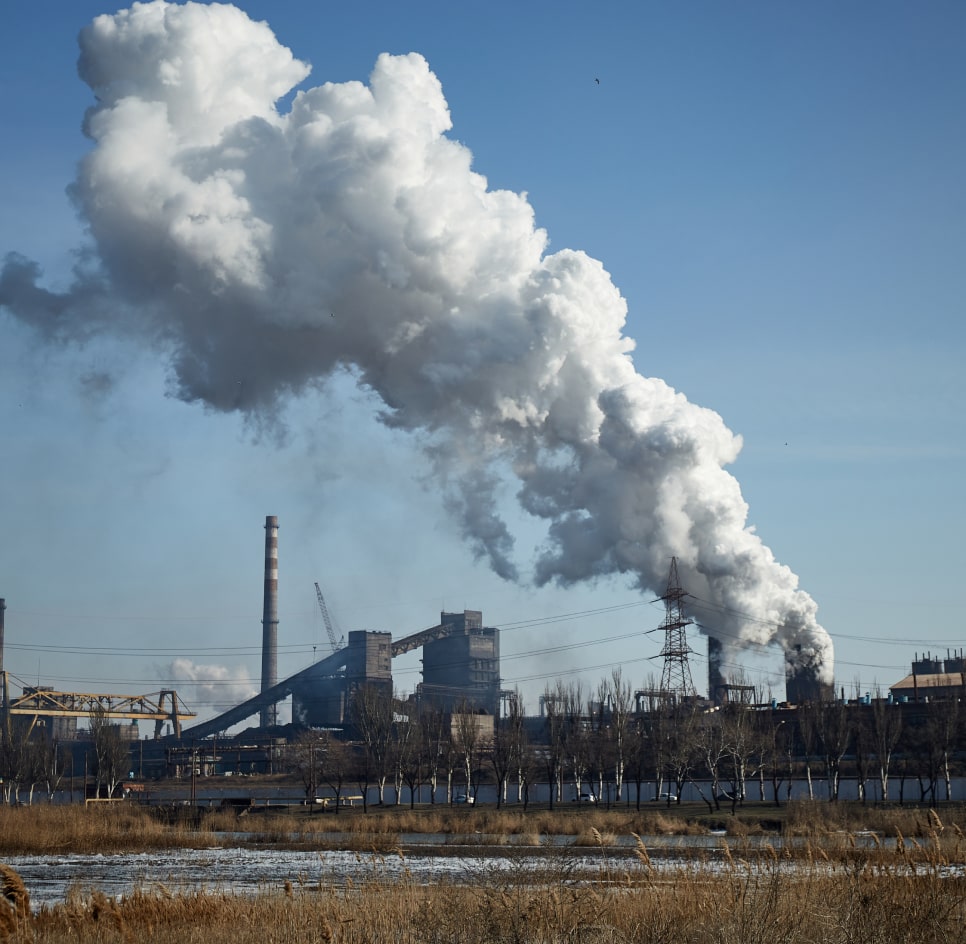
Quellen in Innenräumen – Kochen, Kerzenbrennen, Tabakrauchen, Petroleumöfen, Bautätigkeiten. Quellen im Freien – Waldbrände, Erdbeben, Vulkanausbrüche, Kraftwerke, Abfallbehandlungsanlagen, Ölraffinerien usw.
Der Durchmesser von PM 2,5 beträgt weniger als 2,5 Mikrometer und gelangt leicht in die Lunge und den Blutkreislauf. Es verursacht Niesen, Entzündungen, Hautallergien, Asthma, Husten, Lungenentzündung, unregelmäßigen Herzschlag, nicht tödliche Herzinfarkte usw. Ein hoher PM 2,5-Wert verringert die Sicht. Es kann auch zu Umweltveränderungen führen. PM10 verursacht Allergien, die empfindliche Gruppen betreffen können.


Die Hauptquelle für CO2 in Innenräumen ist der Mensch. Denn der Mensch atmet Sauerstoff ein und CO2 aus. Es wird auch aus Heizgeräten, der Ölverbrennung von Kohle und der Gasverbrennung freigesetzt. CO2 wird auch durch Abholzung oder Bodendegradation emittiert.
Hohe CO2-Werte haben großen Einfluss auf die Leistung des Einzelnen in einer Schule oder einem Büro. CO2-Exposition kann Kopfschmerzen, Schwindel, Unruhe, Atembeschwerden, erhöhte Herzfrequenz und andere Symptome verursachen. CO2-Emissionen verursachen auch die globale Erwärmung. Eine langfristige Exposition kann zu extremen Gesundheitsproblemen führen. Wie Herzstillstand und beeinträchtigte kognitive Funktionen.


Innenbereich: Farbe, Kleber, Seifen, Stoffe, Holz, Reinigungsmittel, Kunststoffprodukte, Lösungsmittel usw. TVOCs verdampfen bei Raumtemperatur und werden in die Luft abgegeben. TVOC-Quellen im Freien sind Industrieprozesse, Waldbrände und Fahrzeugemissionen.
TVOCs verdampfen bei Raumtemperatur. Es verursacht starke Gerüche, die Kopfschmerzen, Müdigkeit, Schwindel, Nasenbluten sowie Augen-, Nasen- und Rachenreizungen verursachen. Eine hohe Exposition gegenüber TVOCs kann schwerwiegende Gesundheitsprobleme verursachen. Zum Beispiel Übelkeit, Asthma und Schäden an Nieren, Leber oder Nervensystem. Einige Chemikalien können auch bei Tieren Krebs verursachen.

Innen: Rauchen, Reinigungsmittel, Möbel, brennender Brennstoff, Kosmetika, Farbe, Weihrauchbeleuchtung usw. setzen HCHO in der Raumluft frei. Im Freien: HCHO wird bei der Verbrennung von Erdgas, Benzin usw. freigesetzt.
HCHO-Exposition kann zu extremen Gesundheitsproblemen führen. Bei jeder Person kann es zu Reizungen der Augen, der Nase und des Rachens kommen. Es kann auch zu Haut- oder Lungenallergien führen. Damit erhöht es das Risiko einiger Krebsarten und führt außerdem zu Bewusstlosigkeit, Lungenentzündung und anderen extremen Gesundheitsproblemen. HCHO-Exposition kann auch die reproduktive Gesundheit beeinträchtigen.

Quellen in Innenräumen – Kochen, Kerzenbrennen, Tabakrauchen, Petroleumöfen, Bautätigkeiten. Quellen im Freien – Waldbrände, Erdbeben, Vulkanausbrüche, Kraftwerke, Abfallbehandlungsanlagen, Ölraffinerien usw.
Der Durchmesser von PM 2,5 beträgt weniger als 2,5 Mikrometer und gelangt leicht in die Lunge und den Blutkreislauf. Es verursacht Niesen, Entzündungen, Hautallergien, Asthma, Husten, Lungenentzündung, unregelmäßigen Herzschlag, nicht tödliche Herzinfarkte usw. Ein hoher PM 2,5-Wert verringert die Sicht. Es kann auch zu Umweltveränderungen führen. PM10 verursacht Allergien, die empfindliche Gruppen betreffen können.


Die Hauptquelle für CO2 in Innenräumen ist der Mensch. Denn der Mensch atmet Sauerstoff ein und CO2 aus. Es wird auch aus Heizgeräten, der Ölverbrennung von Kohle und der Gasverbrennung freigesetzt. CO2 wird auch durch Abholzung oder Bodendegradation emittiert.
Hohe CO2-Werte haben großen Einfluss auf die Leistung des Einzelnen in einer Schule oder einem Büro. CO2-Exposition kann Kopfschmerzen, Schwindel, Unruhe, Atembeschwerden, erhöhte Herzfrequenz und andere Symptome verursachen. CO2-Emissionen verursachen auch die globale Erwärmung. Eine langfristige Exposition kann zu extremen Gesundheitsproblemen führen. Wie Herzstillstand und beeinträchtigte kognitive Funktionen.


Innenbereich: Farbe, Kleber, Seifen, Stoffe, Holz, Reinigungsmittel, Kunststoffprodukte, Lösungsmittel usw. TVOCs verdampfen bei Raumtemperatur und werden in die Luft abgegeben. TVOC-Quellen im Freien sind Industrieprozesse, Waldbrände und Fahrzeugemissionen.
TVOCs verdampfen bei Raumtemperatur. Es verursacht starke Gerüche, die Kopfschmerzen, Müdigkeit, Schwindel, Nasenbluten sowie Augen-, Nasen- und Rachenreizungen verursachen. Eine hohe Exposition gegenüber TVOCs kann schwerwiegende Gesundheitsprobleme verursachen. Zum Beispiel Übelkeit, Asthma und Schäden an Nieren, Leber oder Nervensystem. Einige Chemikalien können auch bei Tieren Krebs verursachen.


Innen: Rauchen, Reinigungsmittel, Möbel, brennender Brennstoff, Kosmetika, Farbe, Weihrauchbeleuchtung usw. setzen HCHO in der Raumluft frei. Im Freien: HCHO wird bei der Verbrennung von Erdgas, Benzin usw. freigesetzt.
HCHO-Exposition kann zu extremen Gesundheitsproblemen führen. Bei jeder Person kann es zu Reizungen der Augen, der Nase und des Rachens kommen. Es kann auch zu Haut- oder Lungenallergien führen. Damit erhöht es das Risiko einiger Krebsarten und führt außerdem zu Bewusstlosigkeit, Lungenentzündung und anderen extremen Gesundheitsproblemen. HCHO-Exposition kann auch die reproduktive Gesundheit beeinträchtigen.

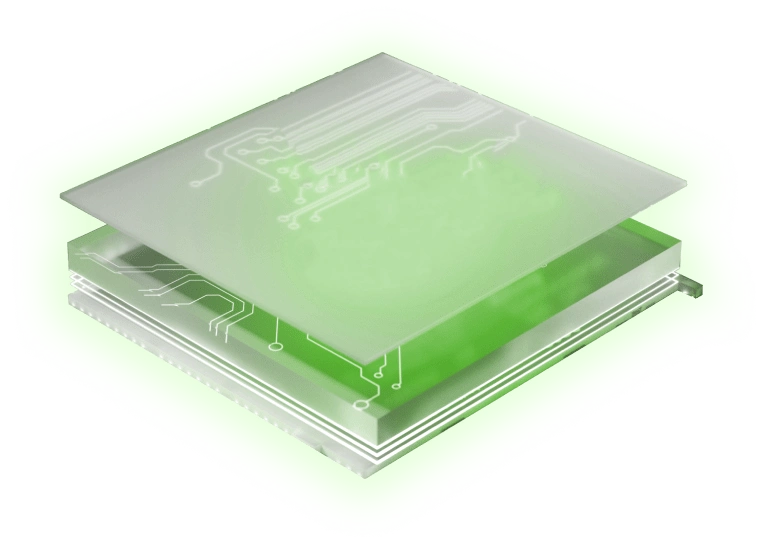
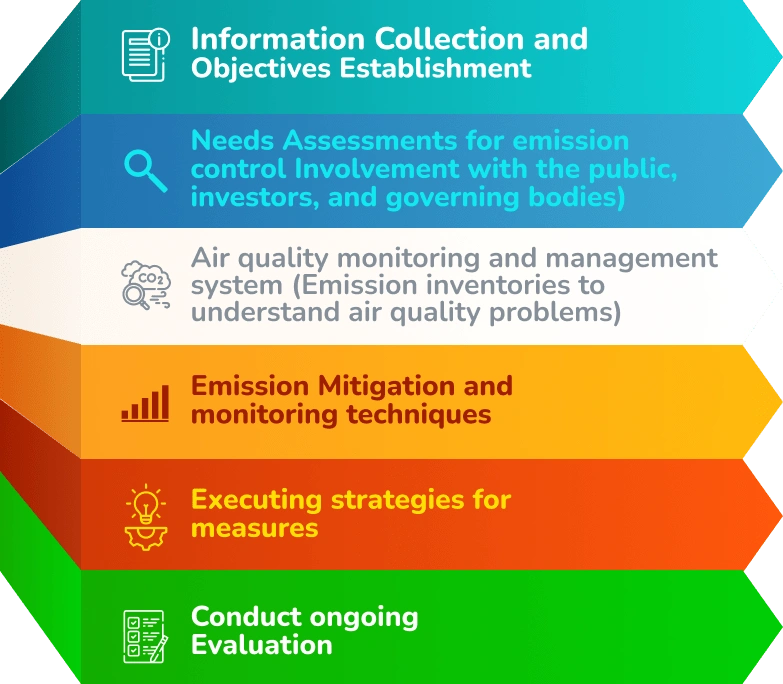
Das Luftqualitätsmanagementsystem ist ein umfassender Plan zur Reduzierung der Luftverschmutzung durch die Verfolgung der Grundursache der Luftverschmutzung in verschiedenen Umgebungen. Die Luftqualitätsmonitore von Prana Air spielen bei jedem Schritt eine entscheidende Rolle. Diese werden für Emissionsinventare benötigt und helfen dabei, Probleme mit der Luftqualität zu erkennen und zu verstehen. Die Echtzeitdaten unserer Monitore unterstützen eine effektive Entscheidungsfindung zur Emissionskontrolle und tragen zur Gesamtbewertung der Luftqualität bei.

Außenluft wird auch als Umgebungsluft bezeichnet, die typischerweise mithilfe von CAAQMs (Continuous Ambient Air Quality Monitoring Station) überwacht wird. Die Außenluftqualitätsmonitore von Prana Air bieten die gleiche Funktionalität wie CAAQMs mit einem kompakten und effizienten Design.
Die Außenmonitore von Prana Air verfolgen AQI, PM2,5, PM10, CO, NO2, SO2, O3, Lärm und andere Schadstoffe.
Get A Quote

Die Raumluftqualitätsmonitore von Prana Air eignen sich perfekt für jede Umgebung – Büros, Wohnungen, Schulen und mehr. Ihr kompaktes Design und ihre benutzerfreundlichen Funktionen machen sie zur perfekten Wahl für die Raumluftüberwachung.
Die Raumluftqualitätsmonitore von Prana Air messen PM2,5, CO2, CO, VOCs, Temperatur, Luftfeuchtigkeit und mehr.
Get A Quote

Außenluft wird auch als Umgebungsluft bezeichnet, die typischerweise mithilfe von CAAQMs (Continuous Ambient Air Quality Monitoring Station) überwacht wird. Die Außenluftqualitätsmonitore von Prana Air bieten die gleiche Funktionalität wie CAAQMs mit einem kompakten und effizienten Design.
Die Außenmonitore von Prana Air verfolgen AQI, PM2,5, PM10, CO, NO2, SO2, O3, Lärm und andere Schadstoffe.
Get A Quote

Die Raumluftqualitätsmonitore von Prana Air eignen sich perfekt für jede Umgebung – Büros, Wohnungen, Schulen und mehr. Ihr kompaktes Design und ihre benutzerfreundlichen Funktionen machen sie zur perfekten Wahl für die Raumluftüberwachung.
Die Raumluftqualitätsmonitore von Prana Air messen PM2,5, CO2, CO, VOCs, Temperatur, Luftfeuchtigkeit und mehr.
Get A Quote
Unsere Luftqualitätsmonitore erfüllen alle Luftqualitätsstandards. Diese Standards werden lediglich empfohlen, um sie auf globale Lösungen anwendbar zu machen. Damit unterstützt es auch viele politische Alternativen zum Luftqualitätsmanagement. Überprüfen Sie verschiedene Schadstoffparameter in der Außen- oder Innenluft.
Verbinden Sie Ihr Gerät mit einem Fernseher oder Web-Dashboard. Um verschiedene Sehenswürdigkeiten zur Luftqualitätsüberwachung auf einem großen Bildschirm zu präsentieren. Wie Sie sehen können, sind die einzelnen Schadstoffe in der Luft. Damit werden auch die historischen Daten angezeigt, um die frühere Exposition zu ermitteln. Sie können auch die Schadstoffübersicht der letzten 24 Stunden und den Filterwert überprüfen.
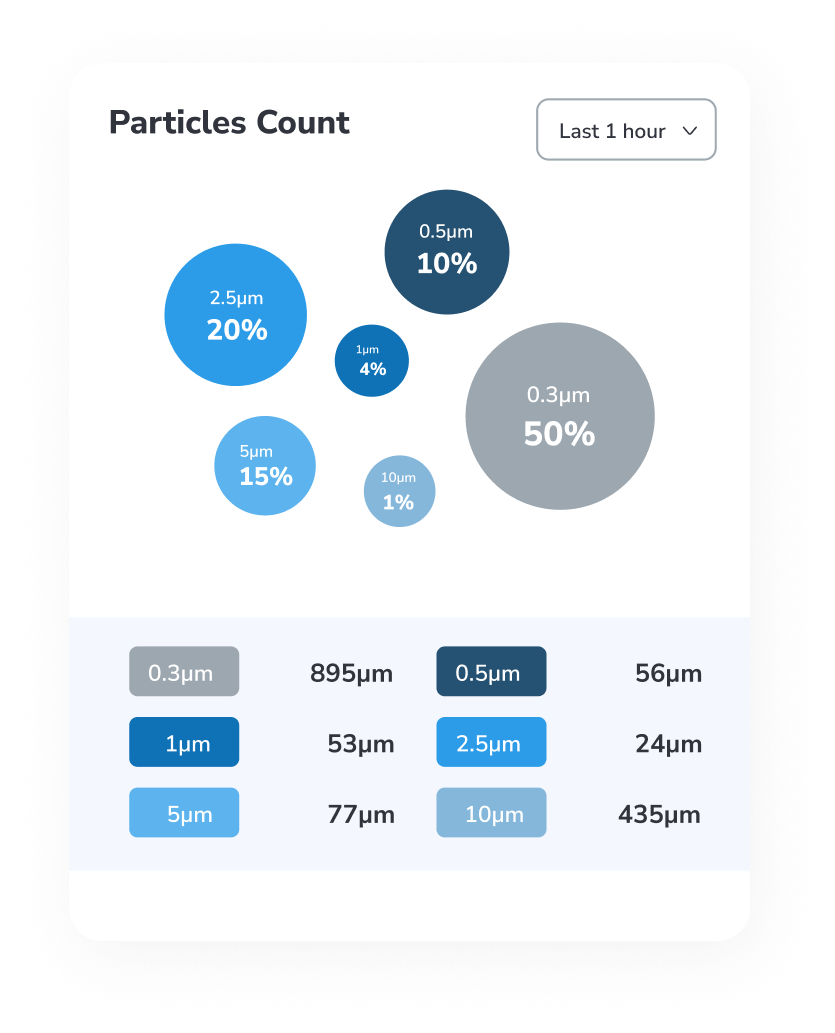
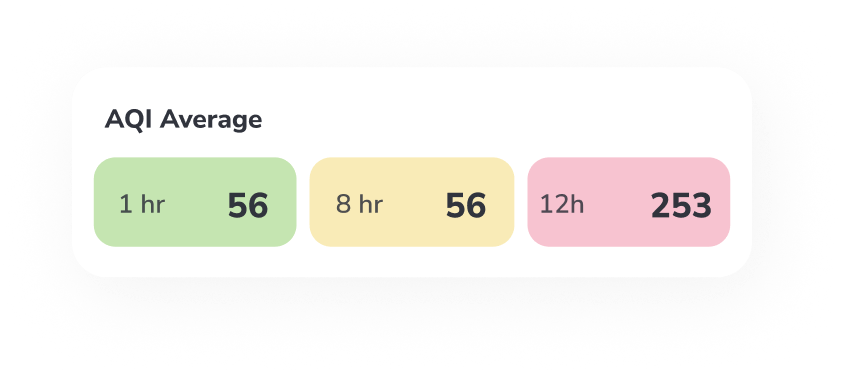
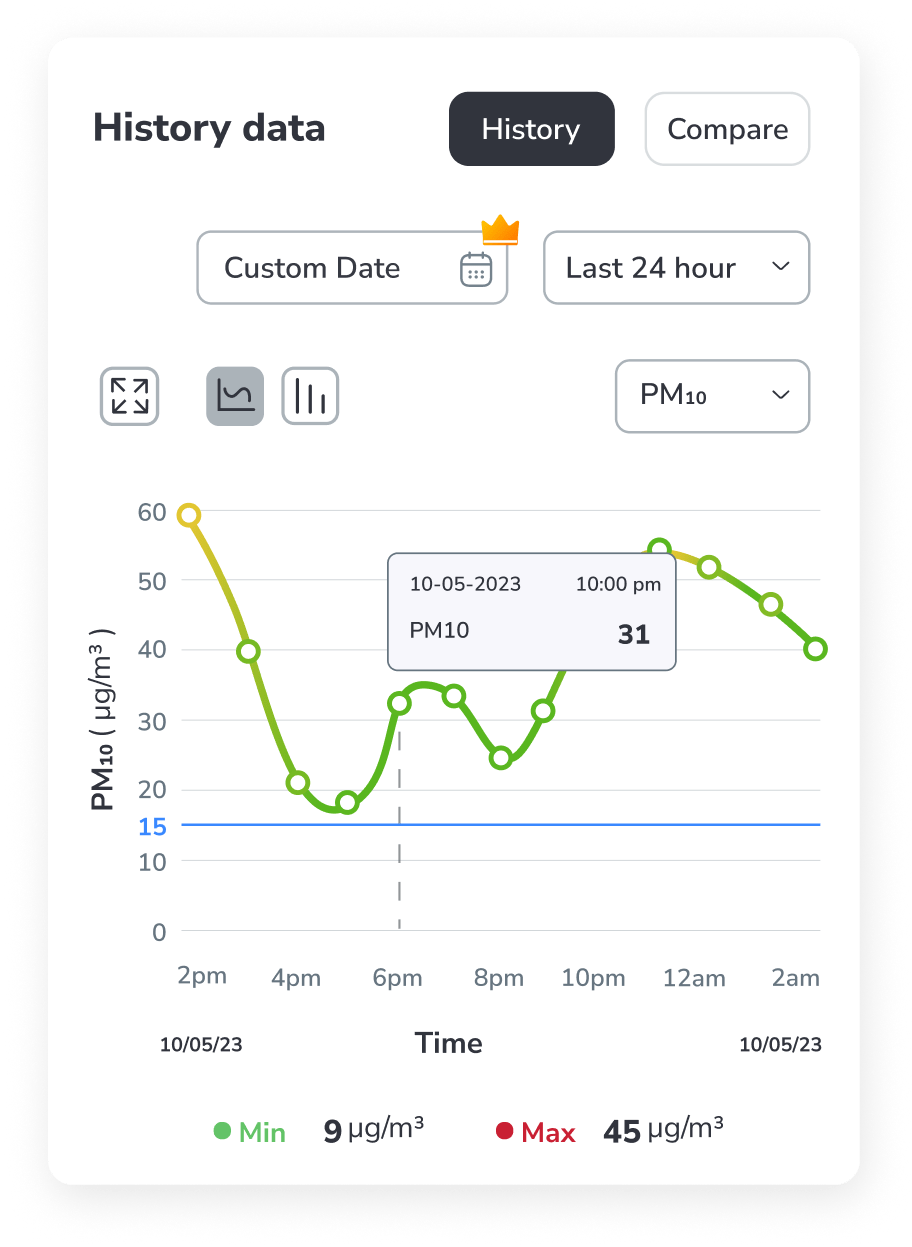
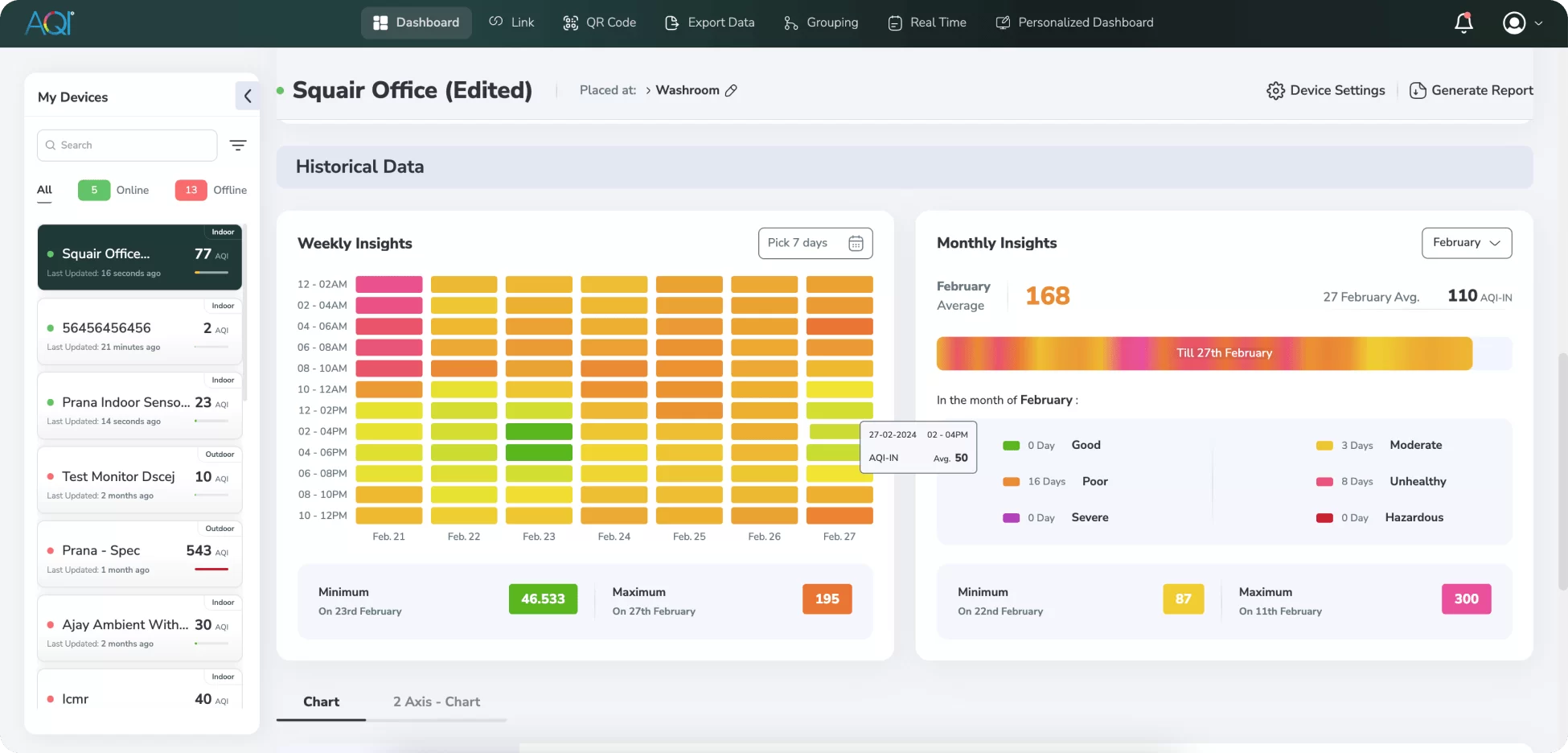
PM2.5 correlation with a high-end instrument
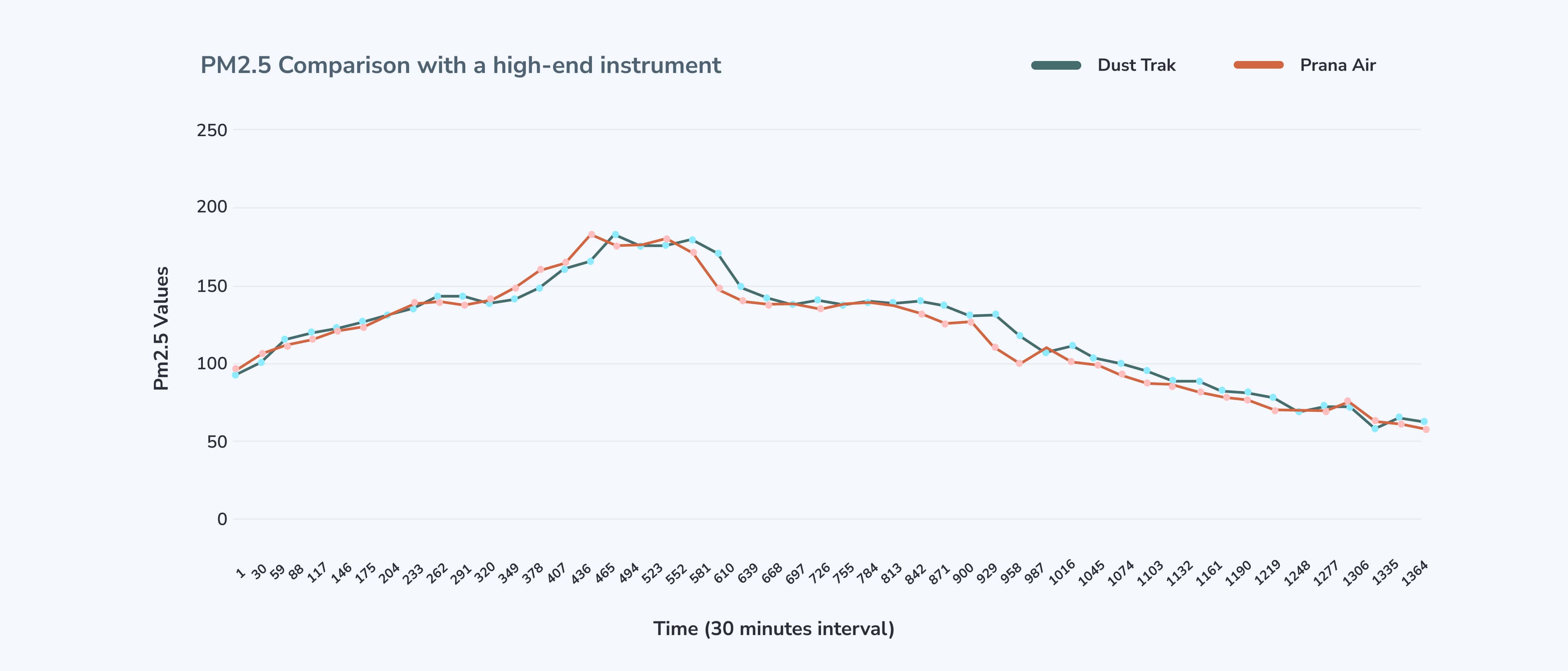
Die PM2,5-Geräte- und High-End-Instrumentendaten von Prana Air weisen Korrelationen auf. Unser Gerät zeigt korrekte Statistiken zu taschenfreundlichen Gebühren an, um bessere Einblicke und Maßnahmen zu ermöglichen.
 Plattformen
Plattformen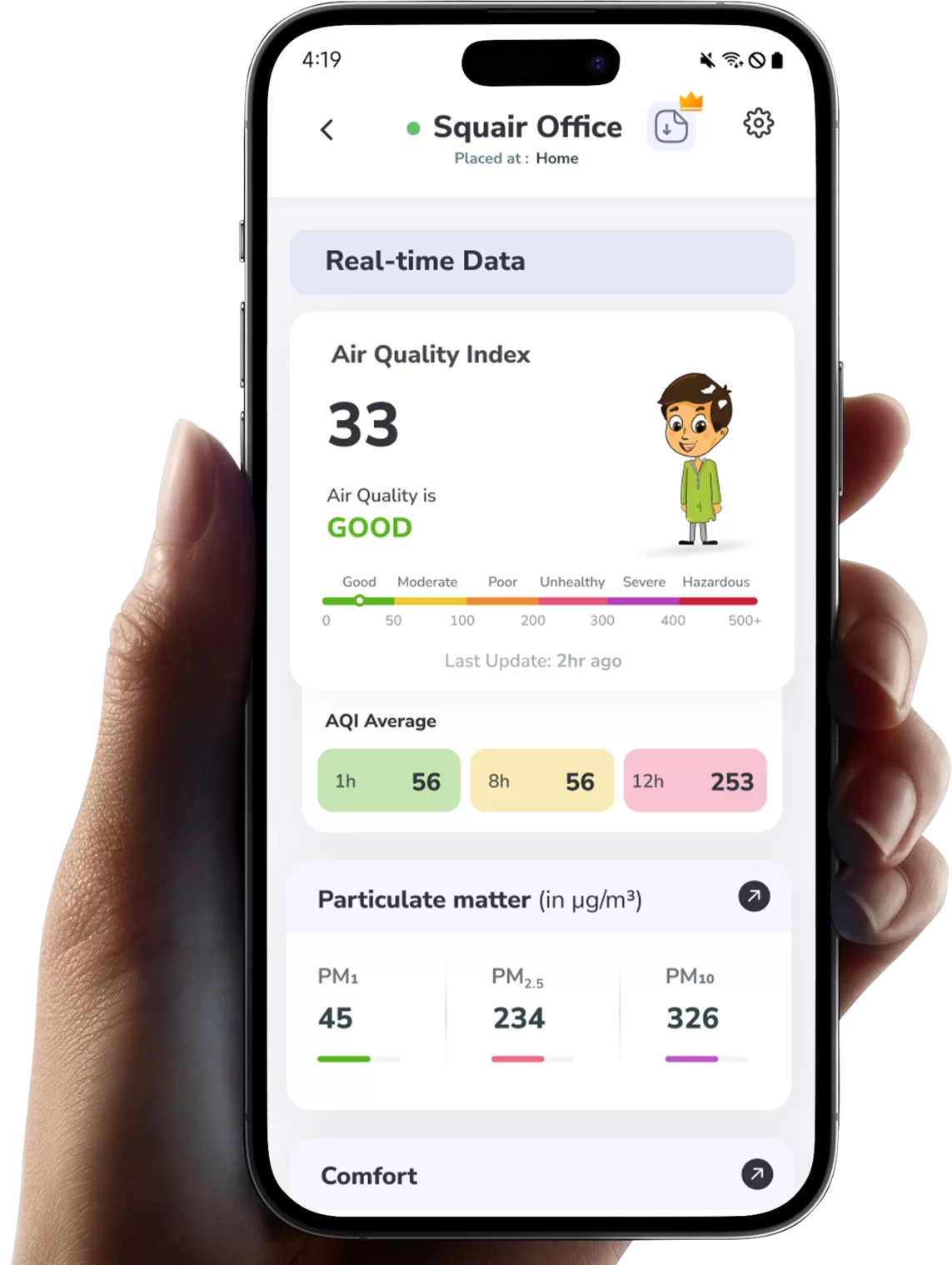
 Mobile App
Mobile App
Treffen Sie einige Vorsichtsmaßnahmen, was Sie tun und was nicht, wenn die Luftqualität gut und schlecht ist.

Greifen Sie über die AQI-App auf Echtzeit- und historische Luftqualitätsdaten (24 Stunden, Woche oder Monate) zu.
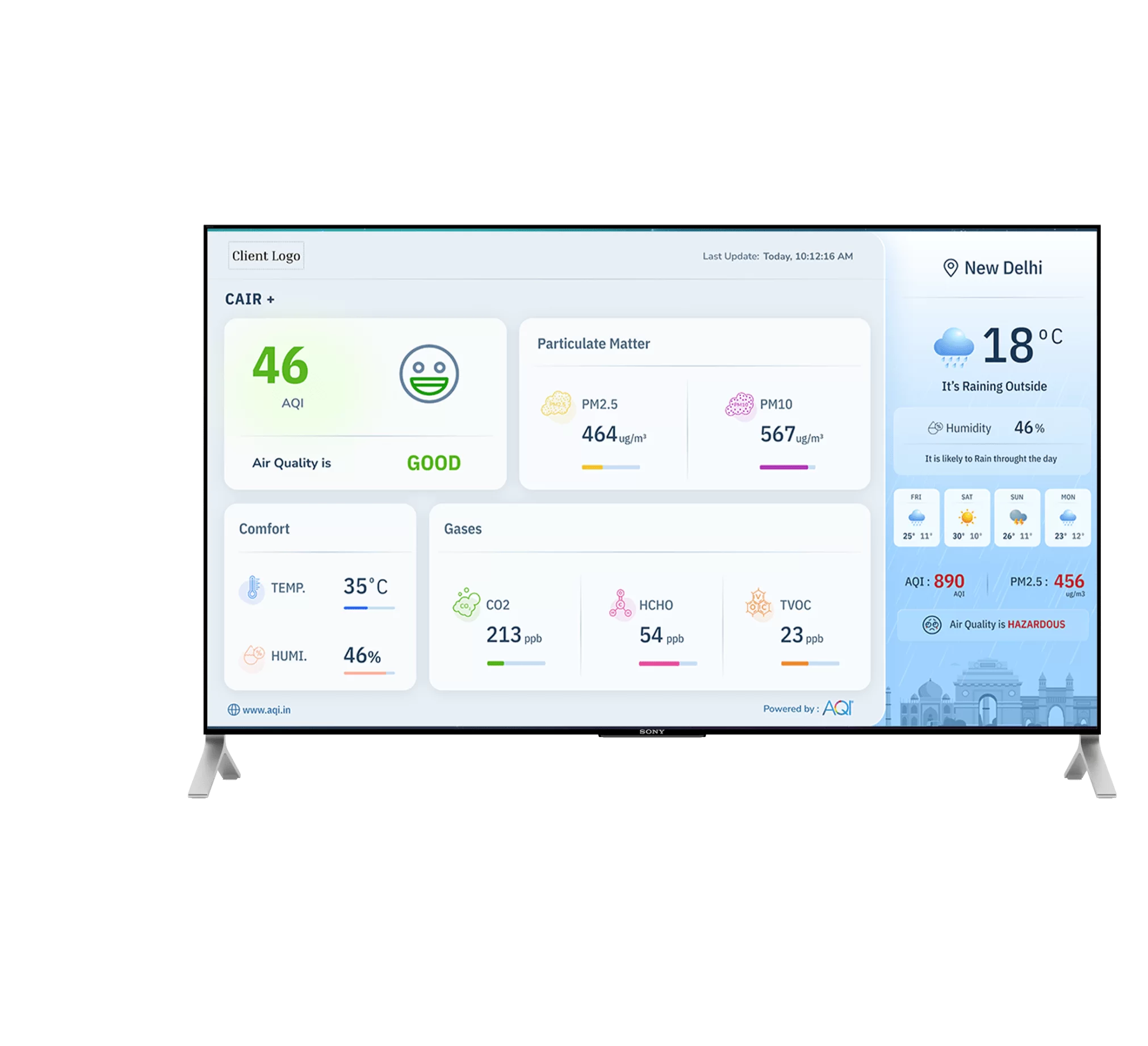
 TV Application
TV Application
Erhalten Sie eine Vielzahl von Themenoptionen, die Sie auf Ihrem Fernseher einstellen können, um eine bessere und personalisiertere Datenpräsentation zu erzielen.

Verbinden Sie Ihr Gerät mit der TV-App und erhalten Sie rund um die Uhr Luftqualitätsdaten auf Ihrem Fernsehbildschirm.

 Web Dashboard
Web DashboardErhalten Sie jederzeit und überall Echtzeit- und historische Daten zu Luftqualität, Temperatur usw.

Vergleichen Sie mehrere Daten zur Außenluftqualität, um fundierte Entscheidungen zu treffen.

 Mobile App
Mobile App
Treffen Sie einige Vorsichtsmaßnahmen, was Sie tun und was nicht, wenn die Luftqualität gut und schlecht ist.

Greifen Sie über die AQI-App auf Echtzeit- und historische Luftqualitätsdaten (24 Stunden, Woche oder Monate) zu.

 TV Application
TV Application
Erhalten Sie eine Vielzahl von Themenoptionen, die Sie auf Ihrem Fernseher einstellen können, um eine bessere und personalisiertere Datenpräsentation zu erzielen.

Verbinden Sie Ihr Gerät mit der TV-App und erhalten Sie rund um die Uhr Luftqualitätsdaten auf Ihrem Fernsehbildschirm.

 Web Dashboard
Web DashboardErhalten Sie jederzeit und überall Echtzeit- und historische Daten zu Luftqualität, Temperatur usw.

Vergleichen Sie mehrere Daten zur Außenluftqualität, um fundierte Entscheidungen zu treffen.
Erhalten Sie einen Einblick in verschiedene Bewertungen wie thermischer Komfort, Schimmel, Belüftung, Filterung, Geruch, Milben, Viren usw. Treffen Sie nach der Überwachung fundierte Entscheidungen zur Kontrolle.

die Versorgung Ihres Zimmers mit frischer Luft

Personenkapazität des Raumes

die Versorgung Ihres Zimmers mit frischer Luft

Wahrscheinlichkeit einer Virusbildung im Raum
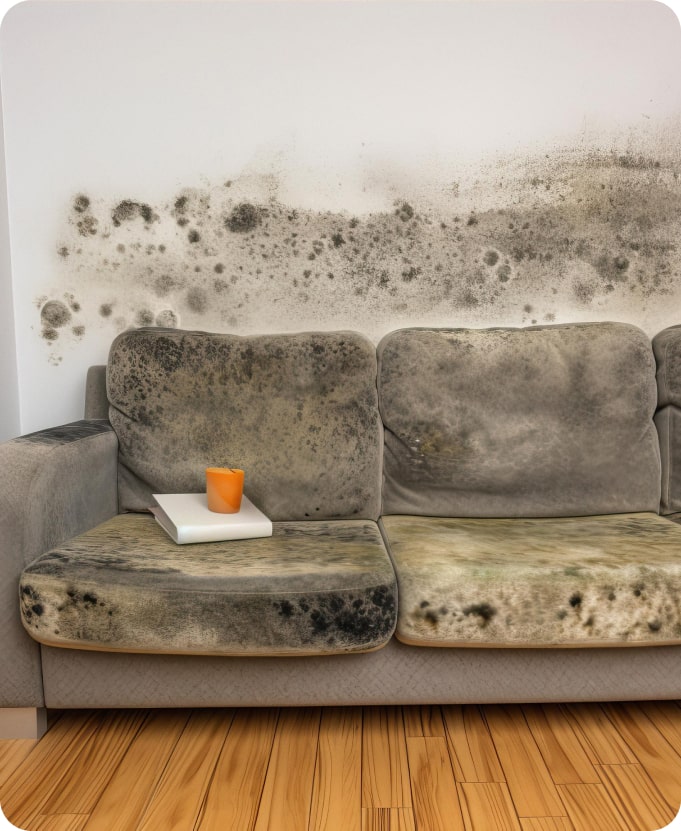
Wahrscheinlichkeit der Schimmelbildung im Raum

ein charakteristischer Geruch im Raum
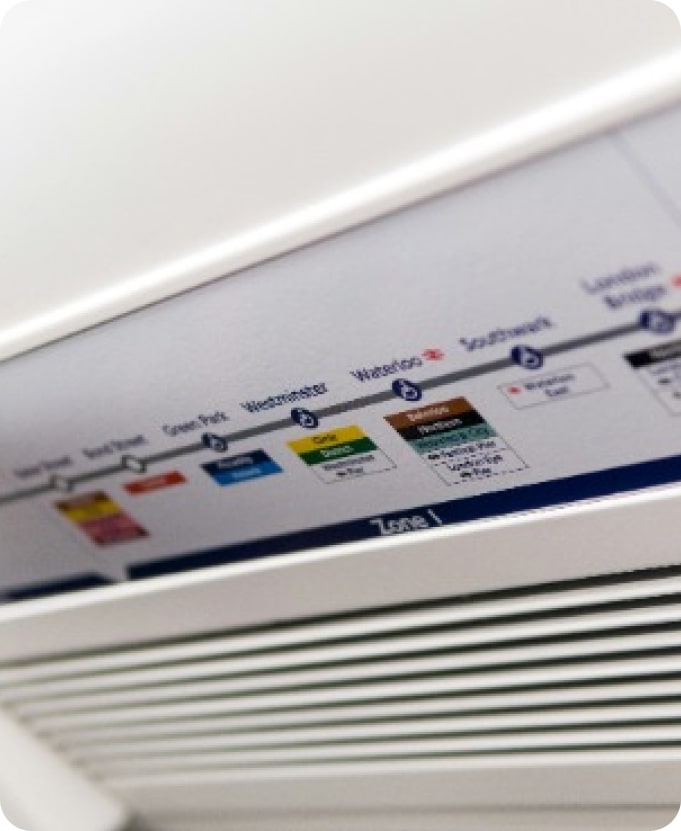
Effizienz des Filters im Raum

ein Zustand körperlicher Leichtigkeit im Raum
Einige der Top-Organisationen der Branche




































































Einige der Top-Organisationen der Branche
![]()
Es ist ein großartiges Produkt, das den PM2,5-Wert in einer geschlossenen Umgebung oder im Freien anzeigen kann. Es ist nicht 100 % genau und angesichts seiner Größe und seines Preises wäre es meiner Meinung nach eine unrealistische Erwartung, ein solches Maß an Genauigkeit zu haben. Es zeigt Ihnen die Größenordnung der PM2,5-Verschmutzung an einem Ort an und zeigt die Messung auch extrem schnell an. Ich habe die Geräteleistung mit anderen Messwerten (von Luftreinigern) getestet und trianguliert und glaube nicht, dass die Fehlerquote über 10 % liegt. Dies geschah jedoch bei PM2,5-Werten unter 100. Ich bin mir nicht sicher, ob sich die Fehlertoleranz vergrößert oder verringert, wenn PM2,5 auf Werte über 150 ansteigt. Wenn Sie auf indikativer Basis wissen möchten, wie hoch die Verschmutzung an einem Ort zu einem bestimmten Zeitpunkt ist, dann wäre dies ein sehr empfehlenswertes Gerät.





![]()
Tolles Produkt, zeigt PM 2,5, PM 10, Temperatur, Luftfeuchtigkeit zusammen mit AQI. Es gab ein Problem mit der mobilen App, aber das PRANA AIR-Team hat sehr gut reagiert. Vielen Dank für die Unterstützung. Das schnelle Aufladen mit der USB-C-Option ist eine Ergänzung, ich muss für dieses Gerät kein zusätzliches Ladegerät mitnehmen. Wirklich tragbar und preiswert!





![]()
Sehr klein und kompakt. Die Batterielebensdauer ist kurz, aber ich habe gelernt, sie ein- und auszuschalten, wenn ich sie herausnehme. Größe ist erstaunlich. Am wichtigsten war, dass ich zwei bestellt hatte. Bei einem hatte ich ein Problem. Ich kontaktierte das Unternehmen und sie ersetzten es umgehend. Das hat mich sehr beeindruckt. Und das hat mich dazu gebracht, ihnen 5 Sterne zu geben! Danke schön.





![]()
Habe es zum zweiten Mal bestellt, da das Modell, das ich vor drei Jahren gekauft hatte, verloren gegangen war und das ich nach drei bis vier Jahren Bedenkzeit bestellt hatte. Ich muss den Spot-AQI kennen, da ich Läufer bin. Finde es ziemlich genau. Die Messwerte stimmen mit den AQI-Daten überein, die von Wetter-Apps angezeigt werden. Außerdem sinkt der PM2,5-Wert schnell, wenn ich ihn über den Mi-Luftreiniger halte. Einziges Manko gibt es: Das Display ist sehr dunkel. Um die Daten zu lesen, muss man unter einen Schatten treten. Dennoch erfüllt es seinen Zweck. Wenn Sie auf der Suche nach einem Einstiegspreis sind, sollten Sie zuschlagen. In China hergestellt.





![]()
Wenn Sie wie ich AQI-bewusst sind, dann ist dieses Produkt ein Geschenk des Himmels. Winzig genug, um in die Tasche zu passen, und der Akku ist gewaltig (zumindest im Moment; in ein paar Monaten wird es noch einmal ein Update geben, um zu berichten, wie es altert). Die beiden Werte auf dem Foto stammen von heute – einer im Innenbereich (mit einem halben Dutzend laufender Luftreiniger) und der andere im Freien. Der Unterschied ist krass. Außerdem wurde mir klar, dass ich meinen Autoluftfilter nicht wechseln muss, da er die Innenluft trotzdem gut reinigt.





![]()
Es ist ein wunderbarer kompakter Luftqualitätsmonitor für PM 2,5. Ich bin mit den genauen Messwerten sehr zufrieden. Es ist einfach zu verwenden und sehr ergiebig. Anfangs habe ich gezögert, dieses Produkt zu kaufen, da es nur wenige Bewertungen gab. Ich habe es ungefähr 7 Tage lang verwendet und fand es sehr nützlich und ein Qualitätsprodukt. Vielen Dank, Prana Air und Amazon für dieses tolle Produkt.





![]()
Sehr nützlich, wenn Sie sich der Notwendigkeit bewusst sind, die Luftqualität dort zu kennen, wo Sie schlafen, arbeiten oder Sport treiben. Die Akkulaufzeit ist sehr gering, daher ist es besser, den Akku nicht zu lange eingeschaltet zu lassen oder ein Ladegerät griffbereit zu haben.





![]()
Misst den Luftqualitätsindex und liefert umfassende Daten von PM2,5, PM5,0, PM1,0. Basierend auf der Lektüre können Sie sich weiter für den Kauf eines Luftreinigers entscheiden. Dieses Produkt richtet sich an Personen, die sich mit Aspekten der Umweltverschmutzung auskennen.





![]()
Ich verwende es für die letzten zwei Wochen. Derzeit hervorragende Leistung. Zeigt PM 2,5 und PM 10, Temperatur und Luftfeuchtigkeit zusammen mit AQI. Ich hoffe, es hält.





![]()
Kompakte Größe, genaue Ablesung, Akkulaufzeit muss verbessert werden, Kopplung mit Android-App nicht möglich, aber keine so wichtige Funktion.





 DPCC Guidelines
DPCC GuidelinesBitte teilen Sie uns mit, welche Anforderungen Sie haben.
Unser Team wird sich in Kürze mit Ihnen in Verbindung setzen.
Suchen Sie nach einem Monitor für die Luftqualität in Innenräumen?